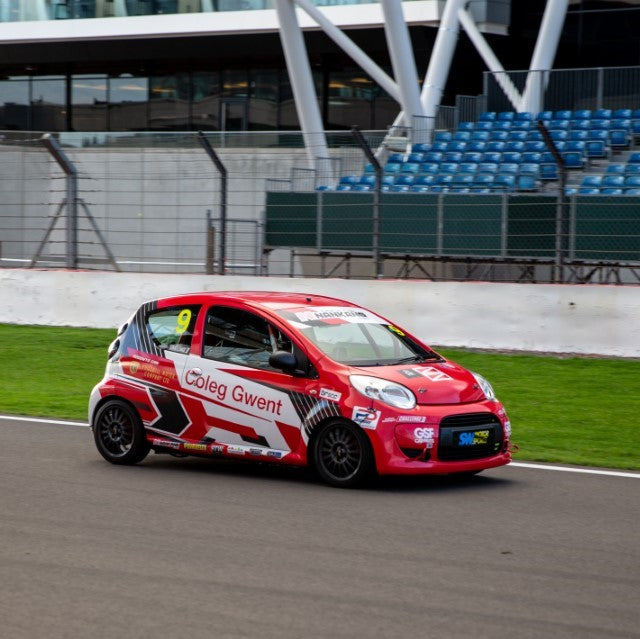Client Name: Coleg Gwent
Industry: Further Education (Automotive Engineering)
“As a college we are continuously striving to deliver industry relevant training so that our students have the best chance of kickstarting an exciting career in engineering. Evo3D have been instrumental in making our vision a reality and they have fully supported us in our journey to integrate advanced manufacturing methods to our curriculum.”
The Challenge
Coleg Gwent students have been competing against other colleges and universities across the UK, in the Student Motorsport Challenge (part of the BRSCC City Car Cup). The students were responsible for converting a Citroen C1 donor car into a fully compliant race car and their efforts have been rewarded with a number of podiums in their rookie season. An advanced telemetry system has been installed into the C1, to be used as a learning tool for vehicle and driver development. This upgrade required a bespoke display screen mount to be fitted to the dashboard.
The Approach
This engineering problem was a great opportunity for lecturers and students to gain experience in the additive manufacturing process. The display screen was measured and the placement of the screen was established so the driver could view and operate the controls whilst sitting in the driver’s seat. The wiring harness routing was decided and this would have to be factored in to the design. Final measurements were taken with a trial fit.
The Solution
Using Solidworks and the Creatbot D600 Pro, it was possible to follow a middle-out design technique to create a solution, with known dimensions of the display, location of surrounding dashboard features and wiring harness informing the design. An organic shape was formed using a combination of lofts and the original fixing points from the display screen were translated to the new part.

The Results
The prototype part was printed overnight using PLA with a BVOH soluble support. There were some minor fitment errors that were found, but a quick change to the Solidworks file meant a revised prototype was printed the next day.
The Project
Without having access to advanced manufacturing methods, the solution would have been found using traditional handmade fabrication techniques. The bespoke, organic design would have been simplified and the choice of materials would have been limited. In this case, additive manufacturing provided the designer with more freedom to produce a component that may otherwise be difficult to make, even with subtractive CNC processes.
The additive manufacturing technique was favourable for this solution as it was a one-off, bespoke prototype. The Citroen race car is used to compete at least once a month through the racing season which means there is reduced time to affect changes to the vehicle. The telemetry kit arrived part way through the season, so it was important to get it installed at the earliest point. The whole installation process, including the display mount design and manufacture, was completed in just over one week.
The dashboard and display have since been tested on the race track and the driver is now able to change gear at the optimum time with the help of gear shift lights. This has been advantageous for straight line speed and overtaking. The ability to view live data in the cockpit and then log the data for future learning is also very useful.

The Costs
A total of 2 hours was used to measure and locate the part. It took 6 hours to design the part in Solidworks and the part took 16 hours to print. Whilst this is a functional component, the stresses and forces acting upon it are minimal so PLA was used for prototyping.

